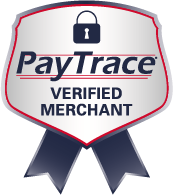We’re pleased to offer a free digital marketing consultation. Call today, (303) 357-5757, or e-mail dbc@dbcdigital.com.
Television advertisements did not kill the radio as first predicted. Radio adapted. And radio still holds a place in today’s modern media. Like radio, death predictions of traditional advertising in a digital age have emerged. Also like radio, traditional advertising is alive and well.
How do you know if you need both traditional advertising and digital advertising? And if you should be utilizing both, what is the right mix of advertising? Let’s take a look.

As a marketing agency, DBC Digital sees the best performance when companies layer both digital and traditional advertising with specific strategies for each. Meaning, it is not necessarily an either/or for traditional advertising and digital advertising, but more about finding the right balance between the two, and then planning your budget accordingly.
Before we get going too much further, let’s define both traditional advertising and digital advertising.
Traditional advertising
When the average person thinks about advertising or marketing, they think about traditional advertising. Such advertising includes conventional avenues for media placement such as a magazine, newspaper, radio, television, direct mail, outdoor billboards, and more. Also, traditional advertising is most often easy to place, and viewer/readership of your ad can sometimes be measured. Traditional advertising also often includes collateral marketing materials, such as business cards or brochures, because these products work to build your company’s brand identity and image.
Digital advertising
Digital advertising is one of the easiest, most cost effective, and fastest ways to reach a broad audience. Sometimes referred to as “internet marketing” or “online advertising,” digital advertising uses internet technologies to promote your business or service. The list of what falls under the digital advertising umbrella is lengthy. Common forms of digital advertising include: banner ads, social media, email marketing, digital classified ads, blogs, news releases, and even search engine optimization (SEO). Also, now that most people can easily access the web from a smartphone — digital advertising is rapidly extending to include mobile users.
When it comes to digital marketing, it is not about purchasing ad space but buying an ad strategy. Your ads get to become a part of someone’s daily life based on their age, interests, etc.
Now, back to the question
So back to the initial question… “Do I need both traditional and digital ads?” The answer is — yes. Yet, you must always keep in mind, there is no such thing as a one-size-fits-all advertising marketing strategy. As with any marketing plan, you must ask yourself who is your target audience? After you define your target audience, you need to do a market analysis of where they get their information and the best way to reach them.

The battle for attention
For an effective and cohesive marketing strategy, you should be reaching the same market at multiple touch points. The more places a consumer sees your ads, the more likely they are to remember your message. The trouble is messaging is literally everywhere. Companies are all fighting for their prospects attention, and the average person sees up to 10,000 advertising and marketing messages each day.
As more and more businesses turn their focus to digital advertising, they leave more room to play in traditional channels. If you have a strategy in place to utilize traditional advertising, you are more likely to be seen.
Here are a few examples of how you can layer your advertising strategies.
1. Print magazines and digital content
Just as the radio lives on, so does print. Magazines are mostly for specific audiences, thus are perfect for reaching target markets. Consider advertising, sponsored content, or event sponsorships with magazines. In addition to the print advertising, find out how to reach the publication’s digital audience — whether that is through its social media, website, or digital editions. Then devise a plan to promote your business in that digital space, as well.
2. Newspapers and online ads
Remember when we said to define your audience? Maybe your audience still loves the morning ritual of reading the newspaper as they sip on coffee. Hyper-local and community newspaper advertising is still perfect for certain local businesses. For example, if you are a real estate agent, advertising in the local newspaper might be a fit for you if they also offer a local website. Then pair those ads with the publication’s online components such as website banner ads and social media posts.
3. Television and video ads
Television advertising is becoming a lot cheaper as many younger consumers decide to cut the cable cord, so depending on your audience, TV might be a place for you. Then you can compliment your TV ads with videos of different lengths for social media, digital streaming, and inclusion on your website.
4. Radio and streaming ads
Get more exposure for your ads by buying both broadcast and online spots. Think about reaching people during their morning drive when they are looking for traffic reports and local news. A lot of radio stations will produce your ad for free if you have a tight budget. Then think digital. If it is a great spot, buy additional placement on Pandora, Spotify and YouTube. You can also use the advertisement to reach people through popular podcasts.
In conclusion— The perfect mix of advertising
Instead of approaching your ad strategy as having to choose between digital and traditional — look at them as interconnected. If you are running print ads, you should be finding a way to reach a broader audience through some form of digital advertising. With digital advertising, you can strategically go beyond how many people are reached to reaching the right people.
One thing is for certain — your messaging must be clear and memorable in both mediums.
What do you think? Are you layering your traditional and digital advertising?
Please note: Since 2004, we’ve been helping small and medium-sized businesses with all of their marketing needs. We specialize in the real estate, mortgage, financial, and insurance industries. Located in Centennial, Colorado (just south of Denver), we work with clients throughout the U.S.


 In the beginning, the dawn of the social media age was heralded as the start of a new era. There was a lot of hype about the ease of creating branded content for marketers and forging direct connections with their customers.
In the beginning, the dawn of the social media age was heralded as the start of a new era. There was a lot of hype about the ease of creating branded content for marketers and forging direct connections with their customers.




